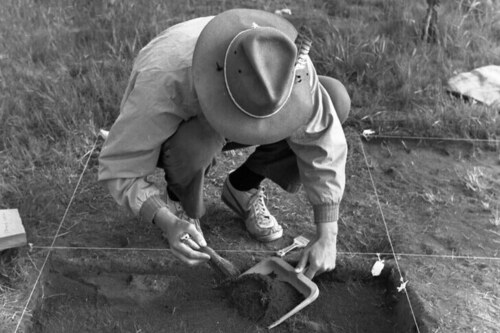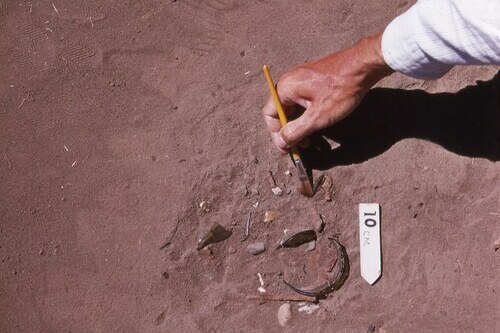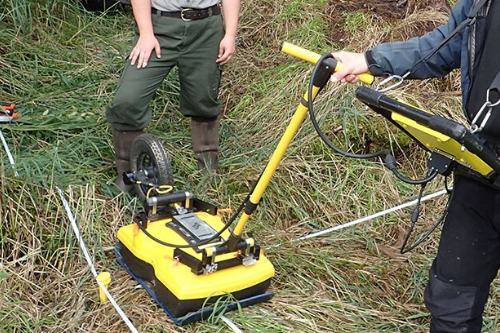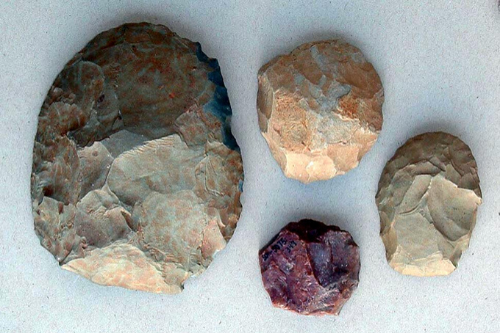
Dig Deeper: How Are Stone Tools Made?
Dig Deeper is a monthly blog focusing on the basics of archaeology by taking a closer look at the exhibition Archaeology 101, which is currently featured at the Center.
Introduction
Now that we have discussed the different ways that archaeologists figure out who may have made the artifacts that are uncovered during an excavation, let’s dig deeper to learn about making stone tools.
What Cultures Used Stone Tools?
Throughout history, stone tools have been made by different cultures all over the world. Before metal tools came about, stone was the most used raw material for tool making for more than three million years. Known as the Stone Age, this period ended once China, Europe, the Middle East, and Africa discovered how to make metal implements. In the Americas, the Stone Age did not end until colonialism when European settlers arrived and introduced steel and iron tools to the indigenous cultures.
Types of Stone Tools
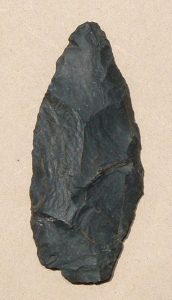
At the Center, we preserve and protect hundreds of thousands of stone tools. There are two generally recognized types: chipped stone and ground stone. They are named for their method of production. Chipped stone tools are made by carefully chipping away parts of the stone to make the desired tool. This is called flintknapping. These types of tools can be made with very sharp edges and points and some examples are: scrapers, projectile points, and knives. Chipped stone tools were used for hunting, food preparation, and building homes or shelter spaces.

Ground stone tools are made by grinding, shaping, and smoothing the stone into the desired tool shape. Ground stone tools were used less for hunting and more for the grinding of food or other substances, such as color dyes. Manos are the hand tools that would be used to grind the food into the metate, which is the larger stone base that would hold food while being ground. Ground stone tools that we still use frequently today are mortar and pestles. While not always made of stone, many of them are and are used to grind things like spices and nuts. Weaponry tools could also be created by using ground stone, such as axes or clubs. Both ground stone and chipped stone tools would often be attached to wood to make artifacts like a throwing spear or arrows.
Variations in Tool Making
Tool making change with time and this is another way that archaeologists are able to identify whom the tools they find belonged to. Different tools were used by different cultures, largely depending on the region that people lived and the geological specimens that were available to them at the time. The materials used when making chipped stone and ground stone tools varied but typically a stronger stone would be used to make ground stone, like granitic rock. Materials like obsidian, or more glass-like rock types, would be used to make chipped stone.
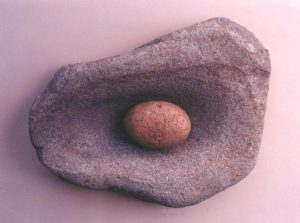
How Are Stone Tools Identified?
Stone tools have characteristics that distinguish them from natural stone. Ground stone manos for example, are smooth from the grinding wear from use over time. Chipped stone tools can be identified and separated from naturally broken stone by identifying the bulb of percussion. The bulb of percussion is formed when a stone is struck with another stone tool. The energy that enters the stone is strong and then tapers off so that the resulting flake is thicker and at the top and thinner towards to bottom.
Up Next
What about all of the flakes that are created when making a chipped stone tool? Do archaeologists care about those? Come back next month to dig even deeper and learn what debitage is!
By Jessica McPheters, Collections Manager
Learn More
For more information on stone tool making, visit the Smithsonian Museum of Natural History’s site What does it mean to be human?


